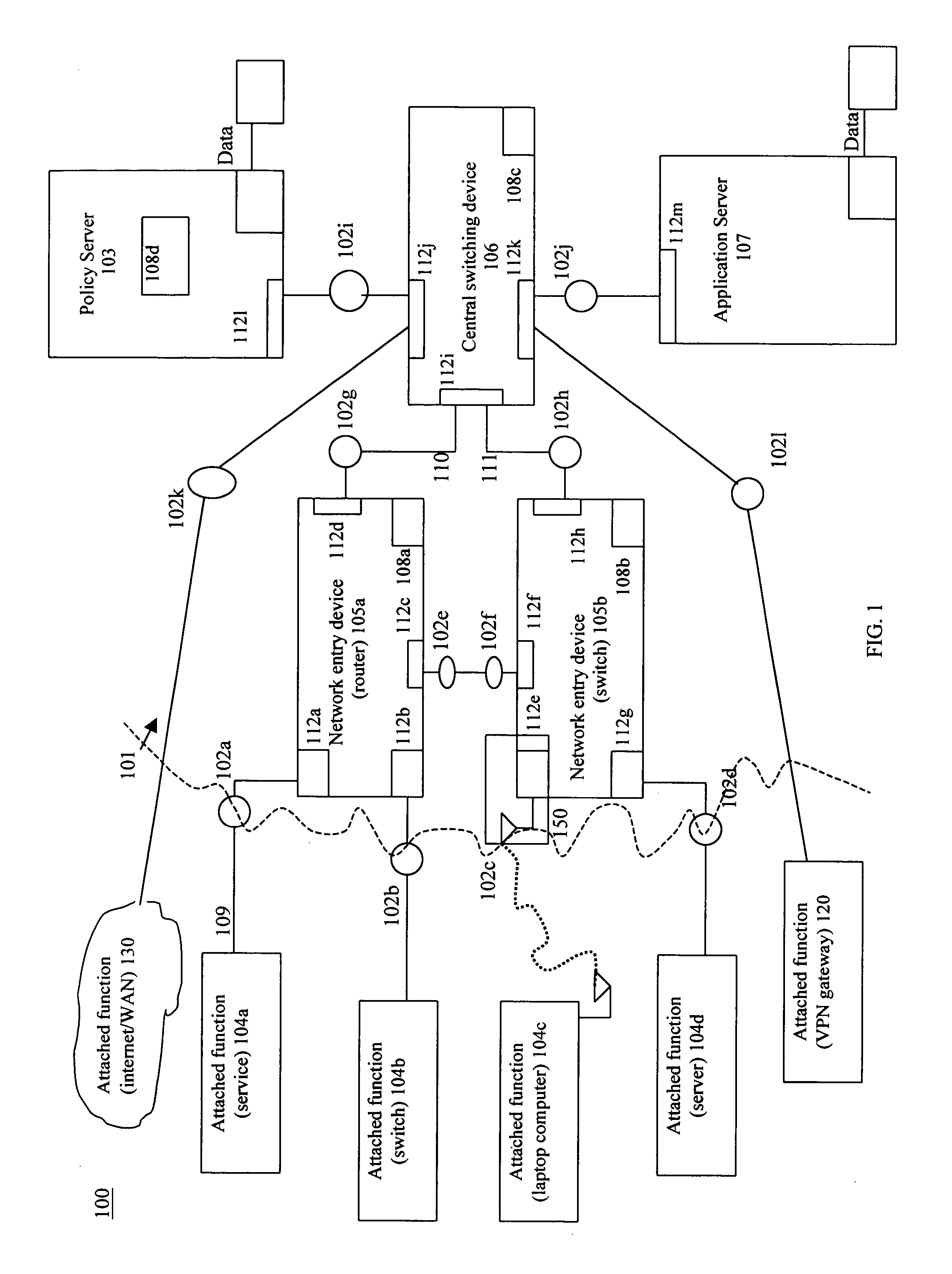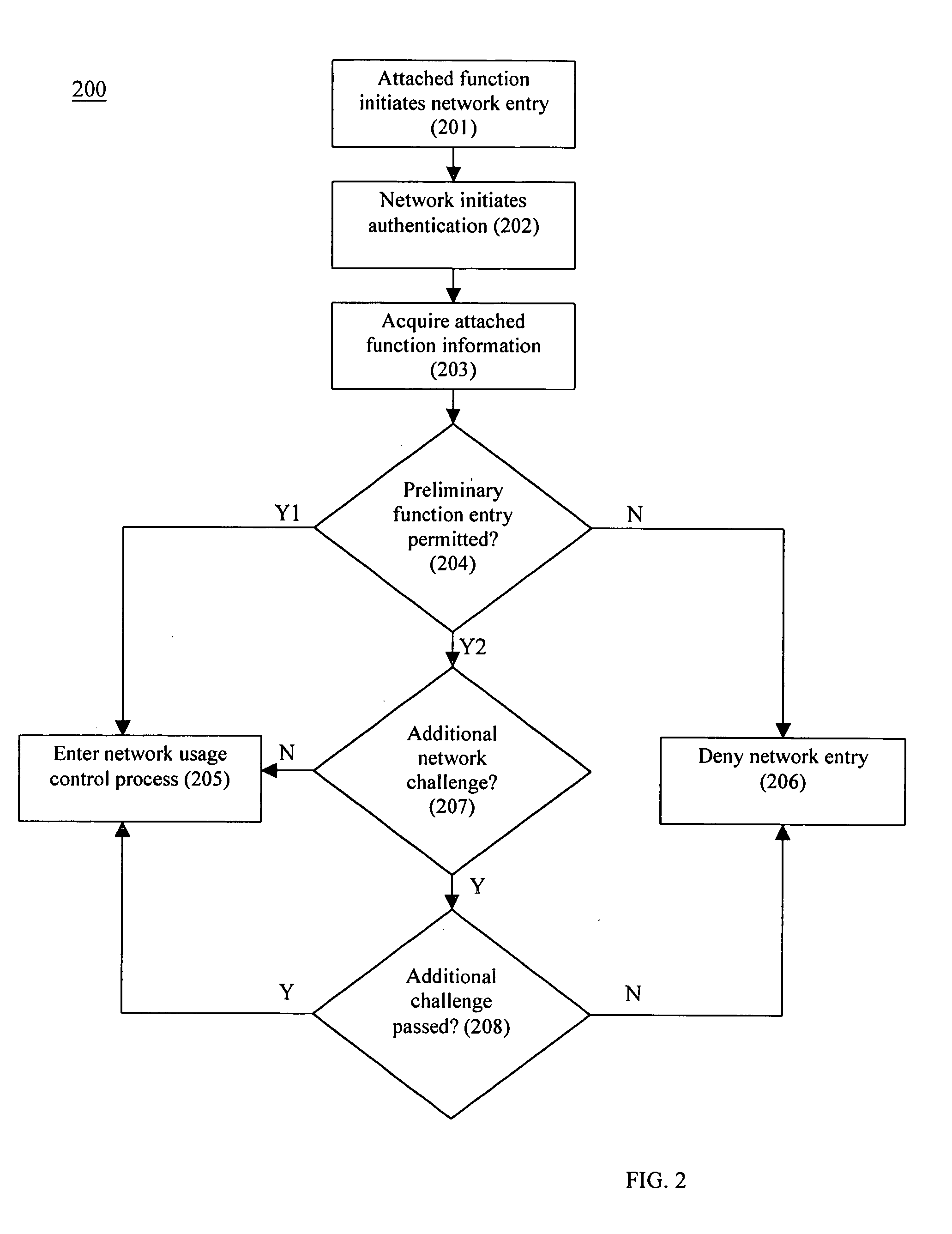System and method for dynamic network policy management
a network policy and dynamic technology, applied in the field of comprehensive and continuous control of network services, can solve the problems of harmful to the network system, no coordinated mechanism to revise the set of policies, and restricted access to applications, files, databases, etc., to improve network usage, control, and security. the effect of network resources
- Summary
- Abstract
- Description
- Claims
- Application Information
AI Technical Summary
Benefits of technology
Problems solved by technology
Method used
Image
Examples
Embodiment Construction
[0021] The present invention is a system and related method for provisioning policies to attached functions in a dynamic manner. Referring to FIG. 1, a network system 100 incorporating the capability of the policying system of the present invention operates and provides network services to attached functions according to policies assigned to the attached functions. Network system 100 includes a network infrastructure 101 and one or more attached functions connected to or connectable to the network infrastructure 101. The network infrastructure 101 includes multiple switching devices, routing devices, access points, MANs, WANs, VPNs, and internet connectivity interconnected and connectable to by way of connection points (e.g., 102a-k). The policying system of the invention employs both hardware and software (e.g., a function embodied in an application executing on policy server 103) to establish network usage control throughout the entire network system 100 at all times as described ...
PUM
 Login to View More
Login to View More Abstract
Description
Claims
Application Information
 Login to View More
Login to View More - R&D
- Intellectual Property
- Life Sciences
- Materials
- Tech Scout
- Unparalleled Data Quality
- Higher Quality Content
- 60% Fewer Hallucinations
Browse by: Latest US Patents, China's latest patents, Technical Efficacy Thesaurus, Application Domain, Technology Topic, Popular Technical Reports.
© 2025 PatSnap. All rights reserved.Legal|Privacy policy|Modern Slavery Act Transparency Statement|Sitemap|About US| Contact US: help@patsnap.com



